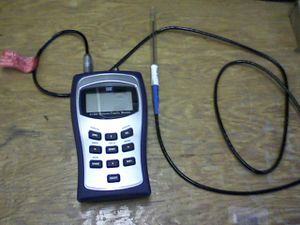Gauss Meters
Gauss
'What is a Gauss Meter?' one may ask. Well in order to define that one must look at the unit of Gauss. A Gauss is a common unit of measurement of magnetic field strength named after the seemingly self absorbed German mathematician and physicist Johann Carl Friedrich Gauss. The unit of guass is equal to one maxwell per square centimeter. According to the alternative centimetre gram second system of units (cgs), the gauss is the unit of magnetic field B, while the oersted is the unit of magnetizing field H. One tesla is equal to 104 gauss, and one ampere per meter is equal to 4π × 10−3 oersted
The meter
The Gauss meter obviously measures the Gauss value. Meters vary in the strength of magnetic fields they are able to measure. For example, high performance hand held Gauss Meters can measurements from 0 to 30 kG with a basic accuracy of 1%. To give you an idea what that’s like: in a gap configuration, the strongest rare-earth magnets (that being the Neodymium magnets) have a field strength of up to 14 kG; that being 7kG on each magnet face.
The Gauss meter works by reading a current that is induced by a magnetic field that is radiated through a coil of thin wires which is inside device. The circuitry inside the Gauss meter amplifies the induced current, thus enabling it to measure as low as 0.1 mg. There are two configurations that are available on the market; single axis coil or a triple axis coil. The single axis are simpler and thus less expensive. However, the more complicated triple axis meters produce more accurate results.
Many Gauss meters come with standard features including auto zero, peak hold, max/min hold, auto range, alarm, memory hold, and relative mode. The probes also come in two fashions: transverse and axial. The transverse probe measures magnetic fields perpendicular to the probe axis. The axial probe has the Hall sensor mounted perpendicular to the probe axis and measures magnetic fields parallel to the probe axis.
Citations
http://www.naturalnews.com/023078.html
http://www.experts123.com/q/what-is-a-gauss-meter.html
http://www.gap-system.org/~history/Biographies/Gauss.html
http://www.omega.com/ppt/pptsc.asp?ref=HHG-20&nav=HEAQ05
http://www.lakeshore.com/mag/ga/gm410m.html
http://www.trifield.com/gauss_meter.htm
Author
Reviewers
Readers
Wesley Brown

